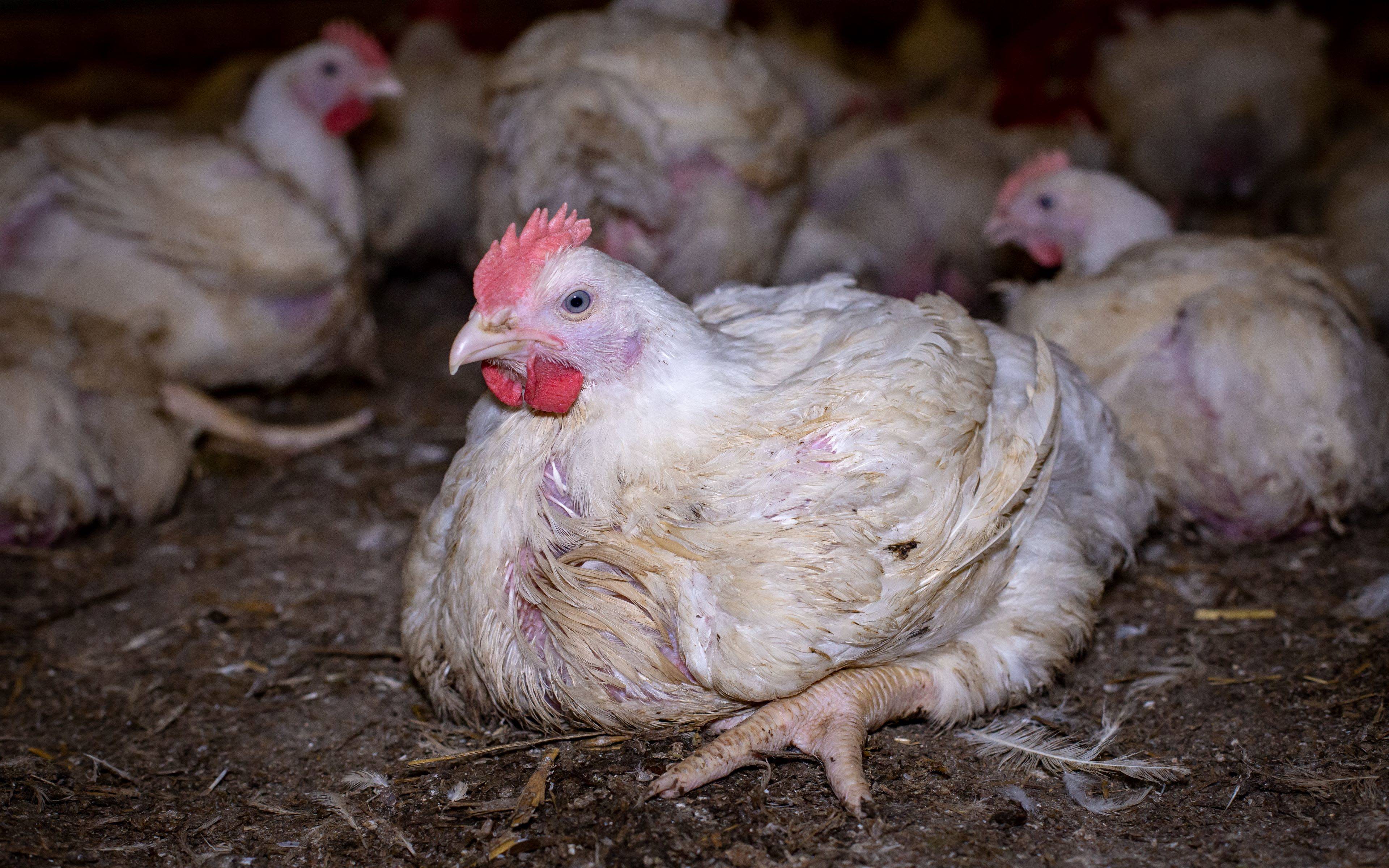




The United States has a long love affair with processed chicken products—in fact, the average American consumes 108 pounds of chicken per year.

Have you ever wondered why chicken is everywhere, and what makes it so cheap in comparison to other, healthier foods? It’s a complicated answer, but it has a lot to do with factory farming & corporate greed.
Transcript
Narrator: The Dollar Menu, home to various shades of brown foods and drinks, is a reliable go-to for fast, hot, and affordable chicken in its many unique forms. However, it raises questions about the absence of vegetables, fruits, or plant-based meats on fast food menus. How is it that an actual animal costs less than foods that grow from the ground? The answer lies in the practices of the animal agriculture industry, which remains hidden from the public.
The US raises and slaughters an overwhelming number of chickens compared to any other animal, and the industry keeps costs low by relying on government subsidies for genetically modified grain used as feed. These subsidies save factory farms billions of dollars while burdening taxpayers. As a result, the average cost of chicken meat in the US is significantly lower than that of fresh produce.
One reason for this disparity is the difference in human labor required for farming chickens compared to growing produce. While strawberries or kale need to be handpicked, a small number of workers can handle hundreds of thousands of chickens in factory farms.
These chickens lead unnatural lives, confined to windowless sheds without access to sunlight, outdoor space, or natural temperatures. They are bred to grow rapidly, far surpassing their natural growth rate.
This is a consequence of a historical competition called the Chicken of Tomorrow, which aimed to create chickens capable of unnatural growth. Since then, the chicken industry has focused on producing faster and larger chickens, driving down production costs and making cheap meat available. However, this rapid growth leads to severe health problems for the chickens, and if humans grew at a similar rate, it would be considered abnormal and alarming.
The majority of factory farms, also known as Concentrated Animal Feeding Operations (CAFOs), are located in rural areas, far away from the public eye. These farms concentrate animals in large numbers and pose serious environmental and public health risks. Communities near these CAFOs suffer from air and water pollution, with minority communities often disproportionately affected. Furthermore, the poultry processing industry, responsible for preparing chickens for market, is rife with safety hazards for workers, including exposure to hazardous chemicals, noise, and dangerous equipment. Workers in these facilities face high rates of injuries and illnesses, including amputations and respiratory problems. The industry's working conditions also made it a hotspot for COVID-19 outbreaks.
Despite these challenges, there are organizations advocating for the rights of poultry workers and pushing for higher welfare standards for chickens through initiatives like the Better Chicken Commitment. Additionally, the rise of plant-based foods provides an opportunity for consumers to make compassionate choices and support more sustainable and ethical options. By opting for plant-based alternatives and demanding higher welfare standards, individuals can contribute to a better future for chickens, the environment, and vulnerable communities impacted by the animal agriculture industry.






